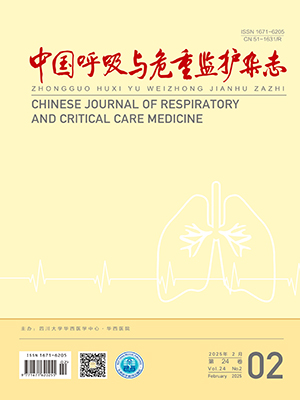| 1. |
方向华, 王文志, 陈捷, 等. 社区心脑血管病危险因素长期干预效果评价. 中华医学杂志, 2000, 80: 94 ~97.
|
| 2. |
Hedner J, Ejnell H, Sellgren J, et al. Is high and fluctuating muscle nerve sympathetic activity in the sleep aponea syndrome of pathogenetic importance for the development of hypertension? J Hypertens Suppl, 1988, 6: S529-S531.
|
| 3. |
Somers VK, Dyken ME, Clary MP, et al. Sympathetic neural mechanisms in obstructive sleep apnea. J Clin Invest, 1995 , 96 :1897-1904.
|
| 4. |
Zakrzewska-Pniewska B, Nojszewska M, Przybylowski T, et al.Clinical versus electrophysiological assessment of dysautonomia in obstructive sleep apnea syndrome. J Clin Neurophysiol, 2004, 21 :435-439.
|
| 5. |
Ziegler MG,Mills PJ, Loredo JS, et al. Effect of continuous positive airway pressure and placebo treatment on sympathetic nervous activity in patients with obstructive sleep apnea. Chest, 2001 , 120 :887-893.
|
| 6. |
Heitmann J, Ehlenz K, Penzel T, et al. Sympathetic activity is reduced by nCPAP in hypertensive obstructive sleep apnoea patients. Eur Respir J, 2004, 23: 255-262.
|
| 7. |
Imadojemu VA, Mawji Z, Kunselman A, et al. Sympathetic chemoreflex responses in obstructive sleep apnea and effects of continuous positive airway pressure therapy. Chest, 2007, 131:1406-1413.
|
| 8. |
Leuenberger UA, Brubaker D, Quraishi S, et al. Effects of intermittent hypoxia on sympathetic activity and blood pressure in humans. Auton Neurosci, 2005, 121: 87-93.
|
| 9. |
Lusina SJ, Kennedy PM, Inglis JT, et al. Long-term intermittent hypoxia increases sympathetic activity and chemosensitivity during acute hypoxia in humans. J Physiol, 2006, 575: 961-970.
|
| 10. |
Park DH, Shin CJ, Hong SC, et al. Correlation between the severity of obstructive sleep apnea and heart rate variability indices. JKorean Med Sci, 2008, 23: 226-231.
|
| 11. |
Peng YJ, Prabhakar NR. Effect of two paradigms of chronic intermittent hypoxia on carotid body sensory activity. J Appl Physiol, 2004, 96: 1236-1242.
|
| 12. |
Rey S, Del Rio R, Alcayaga J, et al. Chronic intermittent hypoxia enhances cat chemosensory and ventilatory responses to hypoxia. J Physiol, 2004, 560: 577-586.
|
| 13. |
Peng YJ, Yuan G, Ramakrishnan D, et al. Heterozygous HIF-1alpha deficiency impairs carotid body-mediated systemic responses and reactive oxygen species generation in mice exposed to intermittent hypoxia. J Physiol, 2006, 577: 705-716.
|
| 14. |
Lesske J, Fletcher EC, Bao G, et al. Hypertension caused by chronic intermittent hypoxia--influence of chemoreceptors and sympathetic nervous system. J Hypertens, 1997, 15: 1593-1603.
|
| 15. |
Peng YJ, Overholt JL, Kline D, et al. Induction of sensory long-term facilitation in the carotid body by intermittent hypoxia: implications for recurrent apneas. Proc Natl Acad Sci U S A, 2003, 100: 10073-10078.
|
| 16. |
Prabhakar NR, Peng YJ, Jacono FJ, et al. Cardiovascular alterations by chronic intermittent hypoxia: importance of carotid body chemoreflexes. Clin Exp Pharmacol Physiol, 2005, 32: 447-449.
|
| 17. |
Phillips CL, Yang Q, Williams A, et al. The effect of short-term withdrawal from continuous positive airway pressure therapy on sympathetic activity and markers of vascular inflammation in subjects with obstructive sleep apnoea. J Sleep Res, 2007, 16: 217 -225.
|
| 18. |
Verberne AJ, Owens NC. Cortical modulation of the cardiovascular system. Prog Neurobiol, 1998, 54: 149-168.
|
| 19. |
Netzer N, Werner P, Jochums I, et al. Blood flow of the middle cerebral artery with sleep-disordered breathing. Stroke, 1998, 29 : 87 -93.
|
| 20. |
Leslie WD, Wali S, Kryger M. Blood flow of the middle cerebral artery with sleep-disordered breathing: correlation with obstructive hypopneas. Stroke, 1999, 30: 188-190.
|
| 21. |
Leuenberger UA, Hogeman CS, Quraishi S, et al. Short-term intermittent hypoxia enhances sympathetic responses to continuous hypoxia in humans. J Appl Physiol, 2007, 103: 835-842.
|
| 22. |
Huang J, Tamisier R, Ji E, et al. Chronic intermittent hypoxia modulates nNOS mRNA and protein expression in the rat hypothalamus. Respir Physiol Neurobiol, 2007 , 158: 30-38 .
|
| 23. |
Phillips SA, Olson EB, Morgan BJ, et al. Chronic intermittent hypoxia impairs endothelium-dependent dilation in rat cerebral and skeletal muscle resistance arteries. Am J Physiol Heart Circ Physiol,2004, 286: H383-H393.
|
| 24. |
Bao G, Metreveli N, Li R, et al. Blood pressure response to chronic episodic hypoxia: role of the sympathetic nervous system. J Appl Physiol, 1997, 83: 95-101.
|
| 25. |
Kumar GK, Rai V, Sharma SD, et al. Chronic intermittent hypoxia induces hypoxia-evoked catecholamine efflux in adult rat adrenal medulla via oxidative stress. J Physiol, 2006, 575: 229-239.
|
| 26. |
Ramanathan L, Gozal D, Siegel JM. Antioxidant responses to chronic hypoxia in the rat cerebellum and pons. J Neurochem, 2005, 93: 47-52.
|
| 27. |
Yuan G, Nanduri J, Bhasker CR, et al. Ca2+ / calmodulin kinasedependent activation of hypoxia inducible factor 1 transcriptional activity in cells subjected to intermittent hypoxia. J Biol Chem,2005, 280: 4321-4328.
|
| 28. |
Sarada SK, Himadri P, Ruma D, et al. Selenium protects the hypoxia induced apoptosis in neuroblastoma cells through upregulation of Bcl-2 . Brain Res, 2008 , 1209 : 29-39.
|
| 29. |
Yu AY, Frid MG, Shimoda LA, et al. Temporal, spatial, and oxygenregulated expression of hypoxia-inducible factor-1 in the lung. Am J Physiol, 1998, 275: L818-L826.
|




